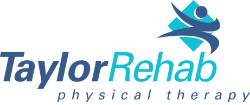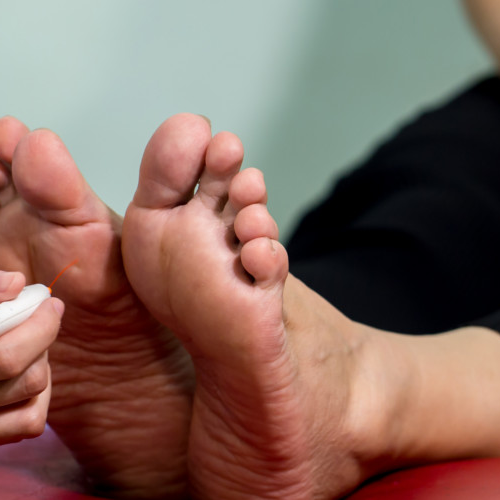
Are you suffering from neuropathy? Neuropathy occurs when there is damage to the peripheral nerves that travel to your arms and legs. When the nerves become damaged, they stop functioning in the way they are supposed to, which can cause multiple issues. People who suffer from neuropathy tend to experience little-to-no sensation in their toes and fingers, which results in issues with function and movement in the affected body parts.
While there are several conditions that can cause Neuropathy, the most common one is diabetes. In fact, according to the American Diabetes Association, “60 to 70 percent of people with diabetes will develop neuropathy within their lifetime.” Fortunately, Peripheral Neuropathy can be treated through our specialized physical therapy services at Taylor Rehab Physical Therapy. For more information, contact our Mooresville physical therapy office today.
What are the Symptoms of Neuropathy?
Neuropathy can cause many different symptoms that can vary from person to person. The most common symptoms include but are not limited to:
- Numbness in the feet or hands
- Tingling or pins and needles sensation in the feet or hands
- Burning, sharp or shooting pain in the feet or hands
- Pain that is worse at night
- Difficulty with balance especially on uneven surfaces or with your eyes closed
- Weakness of the feet or ankles
- Slow healing of cuts, blisters or scrapes on the feet
- Not being able to feel that you are getting a blister or if you step on something sharp
- A sensation of heaviness in the legs or feet
- Numbness in the hands causing difficulty with fine motor tasks like
What Causes Neuropathy?
Neuropathy is known to affect millions of people throughout the United States. It is a complication found in several different medical conditions, including, but not limited to:
- Diabetes
- Peripheral Vascular Disease
- Post-chemo radiation therapies
- Metabolic disorders such as hypothyroidism
- Vitamin deficiencies
- Auto-immune diseases
- Neurological disorders
- Arthritis
- Alcoholism
- Advanced age
- Genetics
One of the most common causes of neuropathy in the conditions listed above is impaired circulation to peripheral blood vessels, particularly the smaller ones, which are known as “capillaries.” Without sufficient blood flow to nerve tissues, oxygen and nutrients cannot get into the tissues and the waste products of metabolism cannot get out. When functioning normally, nerve tissues receive nutrient-rich, highly-oxygenated blood through the capillaries. However, capillaries can easily get clogged when circulation is impaired. The peripheral nervous system eventually becomes distressed and damaged due to starvation and toxicity. In advanced cases of diabetic neuropathy, blood glucose can also damage the walls of these tiny blood vessels supplying nerves, especially those in the legs and feet.
How is Neuropathy treated?
At Taylor Rehab Physical Therapy, we employ several specialized methods and modalities for treating Neuropathy. This will be decided based upon the discretion of our Mooresville physical therapists after a physical examination, analysis of medical history, and the evaluation of your symptoms. While there, unfortunately, is no known cure for neuropathy, there are treatments that we can provide at Taylor Rehab Physical Therapy in order to slow down the progression of nerve damage, maintain function in the affected areas, and decrease any pain you may be feeling. Some of the most common physical therapy treatments for neuropathy include:
Anodyne Therapy
Anodyne Therapy, also referred to as MIRE or “Monochromatic Infrared Energy,” is a form of physical therapy treatment used to non-invasively reduce pain and increase circulation. It can help provide relief for a number of conditions, such as helping to restore sensation in the feet of patients with neuropathy, which can improve walking patterns and balance.
Class 4 Deep Tissue Laser
Our Liteforce Class 4 Deep tissue laser, also known as Class 4 laser works by increasing circulation to the affected areas. This helps damaged nerve fibers receive important nutrients and oxygen to help them repair and improve their function. Our Class 4 laser delivers much higher doses of light to the cells compared to “cold” laser and the treatments are much more time-efficient. The FDA has approved the Class 4 laser for improving pain, inflammation, and circulation.
Dry needling
Dry needling is a skilled intervention that uses thin needles to penetrate the skin and stimulate underlying tissues. Dry needling has been shown to improve increase circulation to the affected area and reduce pain. It can help with managing the pain associated with neuropathy.
Balance and Gait Training
Many people with neuropathy experience numbness in their feet that can make it difficult for them to maintain their balance and walk. Balance and gait training can help teach their body to compensate for this loss of sensation and improve their confidence and safety with standing and walking as well as reduce fall risk.
Strengthening and Cardiovascular conditioning
Foot and ankle weakness can be an effect of neuropathy for some people. Strengthening exercises can help improve balance as well as the ability to stand and walk for those suffering from neuropathy. Cardiovascular conditioning is also important to promote better circulation and for blood sugar control in those with diabetes.
Additional treatments to accompany these modalities will likely include manual therapy, massage, or gentle exercises, in order to enhance circulation, improve function, and promote healing.
Contact Taylor Rehab Physical Therapy today!
If you are suffering from Neuropathy, or you think you might be, contact Taylor Rehab Physical Therapy today to find relief. We can help you take back control of your life by relieving your pain and helping to improve your function. Don’t suffer in silence – get back to your best quality of life with physical therapy treatments today.
Your Next Steps…
Request An Appointment
Receive A Custom Treatment Plan
Work Hard and Progress In Your Recovery
Recover & Enjoy Life Pain-Free!

